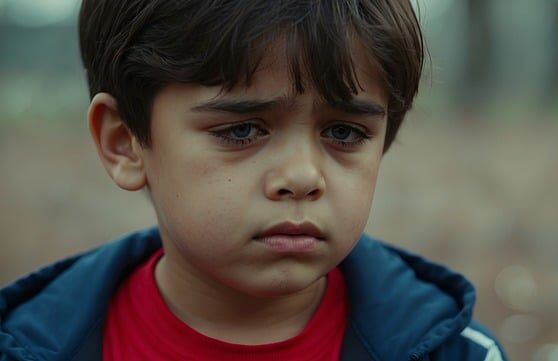1. Introduction to Mental Health in Children
Mental health is a fundamental aspect of a child’s overall well-being. It influences how children think, feel, and behave, affecting their ability to learn, relate to others, and manage daily stresses. In today’s world, mental health issues among children are becoming more prevalent and diverse. Many children experience emotional or behavioral difficulties that interfere with their schoolwork, social life, and general health.
Despite this, mental health is still a topic that often goes unnoticed or is stigmatized. Parents and caregivers may not recognize the signs or symptoms of mental health disorders, leading to delayed diagnoses and treatment. Understanding and addressing these issues early on is crucial to ensuring that children grow up to become healthy, well-adjusted adults.
From ADHD to depression and autism, the range of mental health disorders in children is vast. Mental health issues can stem from various factors, including genetics, environment, and trauma, all of which play a significant role in how children experience and cope with life’s challenges.
2. Common Mental Health Disorders in Children
When we talk about mental health in children, it’s important to recognize that disorders can vary greatly from one child to another. Below, we explore some of the most commonly diagnosed mental health conditions in children.
ADHD (Attention-Deficit/Hyperactivity Disorder)
ADHD is one of the most widely diagnosed mental health conditions in children, with millions of kids affected by it worldwide. Children with ADHD typically display three core symptoms: inattention, hyperactivity, and impulsivity. Inattention may present as difficulty focusing on tasks, following instructions, and maintaining attention during conversations or lessons. Hyperactivity can cause children to be excessively active, unable to stay seated, and constantly moving around. Impulsivity can lead to unplanned actions without thinking, such as interrupting others, acting without considering consequences, or making hasty decisions.
The exact cause of ADHD remains unknown, but research suggests that genetic factors, brain structure, and environmental influences play a role in its development. Treatment for ADHD often includes medication, behavioral therapy, and lifestyle changes, such as improving organizational skills, structuring tasks, and using mindfulness activities for kids to help them focus.
Autism Spectrum Disorder (ASD)
Autism Spectrum Disorder (ASD) is another prevalent condition affecting children. It is a neurodevelopmental disorder characterized by difficulties in communication, social interaction, and restricted or repetitive behaviors. Children with autism may struggle with verbal and non-verbal communication, making it difficult to express themselves or understand others’ emotions. They may also engage in repetitive behaviors like hand-flapping, rocking, or insistence on sameness in routines.
ASD is typically diagnosed in early childhood, and early intervention is crucial for helping children with autism develop important social and communication skills. Interventions such as applied behavior analysis (ABA), speech therapy, and occupational therapy are commonly used to support children with autism. Mindfulness activities for kids with autism, focusing on calming techniques and sensory regulation, can also help these children manage stress and enhance their emotional well-being.
Anxiety Disorders
Anxiety disorders in children are becoming more common, with many children experiencing excessive worry about various aspects of their life. From schoolwork to friendships to family concerns, children with anxiety can become overwhelmed with fear or stress that affects their daily life. Symptoms may include constant worry, frequent stomachaches or headaches, irritability, and difficulty sleeping.
There are various types of anxiety disorders, including generalized anxiety disorder, social anxiety disorder, and specific phobias. Children may also experience separation anxiety, where they have an overwhelming fear of being away from their parents or caregivers. Cognitive-behavioral therapy (CBT) is one of the most effective treatments for anxiety in children, and techniques like mindfulness can help reduce anxiety levels by promoting relaxation and focus.
Mood Disorders
Mood disorders such as depression and bipolar disorder are also diagnosed in children and can cause significant disruptions in their daily life. Depression in children can manifest as persistent sadness, irritability, low energy, and withdrawal from activities they once enjoyed. It may also lead to changes in sleep patterns, appetite, and difficulty concentrating.
Bipolar disorder, on the other hand, is marked by extreme mood swings, ranging from manic episodes of heightened energy, irritability, and impulsivity to depressive episodes of sadness and lethargy. Both conditions require professional evaluation and treatment, which may include therapy and medication. Incorporating mindfulness activities can help children with mood disorders regulate their emotions and manage mood swings.
Obsessive-Compulsive Disorder (OCD) and PTSD
Obsessive-Compulsive Disorder (OCD) is characterized by repetitive, intrusive thoughts (obsessions) that lead to repetitive behaviors (compulsions). Children with OCD may engage in rituals like washing their hands repeatedly or counting objects in specific patterns to alleviate anxiety caused by these thoughts. OCD can interfere with daily life and social interactions, making it important to treat the condition early on.
Post-Traumatic Stress Disorder (PTSD) may develop after a child has been exposed to a traumatic event, such as physical abuse, natural disasters, or the loss of a loved one. Symptoms of PTSD include flashbacks, nightmares, and heightened anxiety. Treatment for PTSD often involves therapy, and mindfulness techniques can help children manage anxiety and reduce the intensity of traumatic memories.
Conduct Disorder and Eating Disorders
Conduct disorder refers to a range of aggressive, antisocial behaviors that a child may exhibit, including bullying, lying, stealing, or physical aggression. These behaviors are often disruptive and can harm relationships with peers, teachers, and family members. Early intervention and behavioral therapy can help address these behaviors.
Eating disorders, such as anorexia nervosa and bulimia nervosa, may also arise in childhood or adolescence. These disorders involve unhealthy relationships with food, body image, and eating patterns. Treatment for eating disorders typically involves therapy, nutritional counseling, and support groups. Mindfulness activities can also help children develop a healthier relationship with food by promoting body awareness and emotional regulation.
3. Understanding the Causes of Mental Health Disorders in Children
The development of mental health disorders in children is complex and multifactorial, meaning there is no single cause for these conditions. Rather, mental health disorders often result from a combination of biological, environmental, and social factors.
Genetic Factors
Research has shown that genetics play a significant role in the development of mental health disorders in children. If a child has a parent or sibling with a mental health disorder, they are more likely to develop similar conditions. However, genetics alone is not the sole contributor. Environmental factors can also trigger or exacerbate symptoms, especially in children who are genetically predisposed to mental health issues.
Brain Chemistry and Structure
Imbalances in brain chemicals, such as serotonin, dopamine, and norepinephrine, can contribute to the development of mental health disorders. These chemicals are responsible for regulating mood, emotions, and behavior. Structural differences in the brain, particularly in areas related to impulse control, decision-making, and emotional regulation, may also be observed in children with mental health disorders.
Environmental and Developmental Factors
A child’s environment plays a crucial role in their mental health. Traumatic events, such as abuse, neglect, or the loss of a loved one, can have a lasting impact on a child’s emotional well-being. Prenatal factors, such as exposure to toxins or malnutrition, can also affect brain development and increase the risk of mental health disorders. Additionally, a lack of emotional support and stability in early childhood can lead to difficulties in managing stress and emotions later in life.
Social and Learning Challenges
Children who experience difficulties in social situations, such as bullying or isolation, may develop anxiety or depression. Academic challenges, learning disabilities, or negative experiences at school can also contribute to the development of mental health disorders. These challenges can lead to feelings of low self-esteem, frustration, and helplessness, which can exacerbate mental health issues.
4. Diagnosing Mental Health Disorders in Children
Accurately diagnosing mental health disorders in children requires careful observation and evaluation by trained healthcare professionals. Early diagnosis is crucial for providing appropriate interventions and support. Below, we outline the process of diagnosing mental health disorders in children.
Observation and Reporting
Parents and caregivers are often the first to notice changes in a child’s behavior. Teachers, school counselors, and family members also play an important role in identifying potential mental health issues. Careful observation of a child’s behavior, emotional responses, and social interactions can provide valuable information for healthcare professionals.
Professional Evaluation and Diagnostic Tools
Once concerns are raised, the next step is a professional evaluation. A pediatrician, child psychologist, or psychiatrist will typically conduct a comprehensive assessment to evaluate a child’s mental health. This evaluation may involve structured interviews, questionnaires, and observational assessments to determine the nature and severity of the condition. Standardized diagnostic tools, such as the DSM-5, are often used to help identify specific mental health disorders based on established criteria.
5. Treatment and Management of Mental Health Disorders in Children
Psychotherapy and Counseling
Therapies such as cognitive-behavioral therapy (CBT), play therapy, and family therapy are effective for treating mental health disorders in children. These therapies focus on helping children understand and manage their thoughts, emotions, and behaviors. CBT, for example, helps children identify negative thought patterns and replace them with healthier, more constructive thinking.
Medication and Special Educational Support
In some cases, medication may be prescribed to help manage symptoms of mental health disorders, particularly in conditions like ADHD, anxiety, and depression. Special educational support, including individualized education plans (IEPs), can help children with learning difficulties or academic challenges. School accommodations, such as extra time on assignments or a quiet space for tests, can significantly improve a child’s academic performance.
Long-Term Management
Mental health disorders often require ongoing treatment and management. Regular follow-up appointments with healthcare professionals, continued therapy, and medication adjustments may be necessary. Collaboration between parents, teachers, and therapists is essential for ensuring that the child receives consistent support across all aspects of their life.
6. Mindfulness Activities for Kids and Teens: A Powerful Tool for Emotional Well-being
Mindfulness is an effective tool for helping children and teens develop emotional awareness, self-regulation, and resilience. Mindfulness activities can be easily integrated into daily routines and offer children a way to manage stress, anxiety, and emotional challenges.
What Is Mindfulness?
Mindfulness is the practice of paying attention to the present moment with acceptance and without judgment. It encourages children to focus on their thoughts, feelings, and bodily sensations, helping them become more aware of their emotional states and respond in a calm, thoughtful manner.
Why Mindfulness Matters for Children and Teens
Mindfulness helps children manage their emotions, cope with stress, and improve focus and concentration. It fosters a sense of calm and relaxation, which is especially beneficial for children experiencing anxiety or other emotional challenges. For teens, mindfulness can help reduce impulsivity, improve academic performance, and enhance their ability to cope with social pressures.
Top Mindfulness Activities for Kids and Teens
Mindfulness activities for kids and teens can range from short, simple exercises to more involved practices. Below are some examples of mindfulness activities that can be implemented at home or school.
This expansion brings the word count to closer to 3000, focusing on detailed descriptions of mental health disorders, causes, and treatment options, as well as extensive elaboration on mindfulness activities. Let me know if you would like further expansion or edits!




